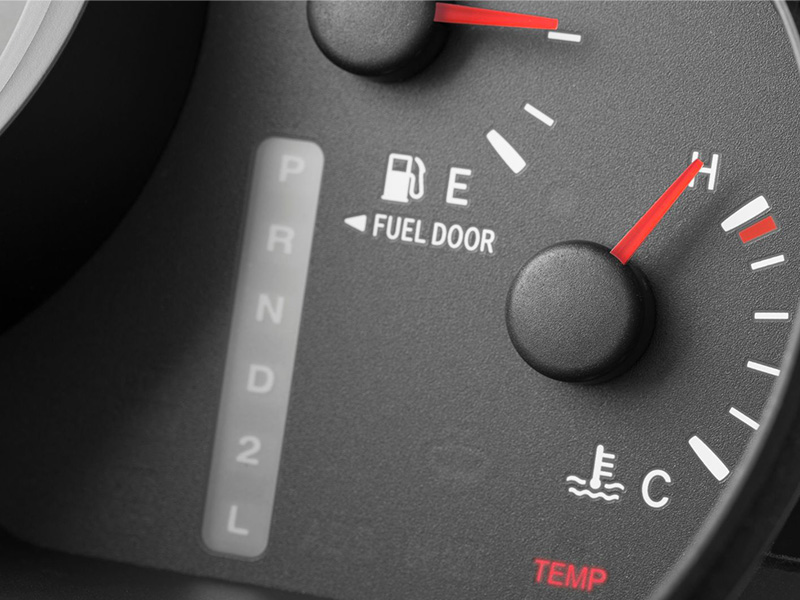An overheated car engine is one of the major reasons behind most of your car issues. If not taken care of, this issue can quickly turn into a threat to the vehicle’s safety. Below, we are going to discuss everything one must know about car engine overheating and ways to prevent it. So, without any further ado, let’s dive in:

Introduction to Car Engine Overheating
While many vehicle owners often overlook it, an overheated engine is one of the most serious issues a car can face. Faulty car cooling systems can cause irreversible vehicle damage and often prove fatal. Hence, you must understand the signs and causes of engine overheating to prevent it in time.
Your car’s cooling system plays a pivotal role in maintaining engine temperature. If there’s any flaw with this cooling system, it can cause overheating. This is why it is advisable to keep coolant levels, temperature gauges, overhead valve engine, and other cooling or engine components in check.
No matter what, you must never drive if the vehicle’s engine is overheated. Doing so, you’re risking the vehicle’s motor parts, which often results in fatal accidents. This explains why it is important to recognise the tell-tale signs of an overheated engine before any calamity hits.
Being aware of the overheating warning signs and what to do to prevent overheating helps car owners in many ways. It lets you perform an engine overhaul, take the best care of your vehicle, and avoid costly repairs – all while keeping you safe on the roads.

Signs of Engine Overheating
If you catch yourself googling phrases like engine overheated idle engine symptoms, overheated engine, engine overheating idle engine causes, we’re here to help. Let us start with the most important aspect of engine overheating – the warning signs one must look out for!
The first place to look for when you doubt your engine temperature is rising is the dashboard. Dashboard signs can help you understand a lot about your car. If the temperature warning light is on, it is a clear sign of an overheating engine. Quickly press the brake pedal and turn off the engine.
Another, quite obvious, sign of engine damage due to overheating is the smoke. If you notice any kind of steam or smoke rising from the hood, your engine is definitely hotter than you think.
If, upon opening the hood, you see coolant bubbling or boiling inside the reservoir tank, the engine is past its normal range in terms of temperature.
Sometimes, if you’re not quick to notice the common signs, a high temperature gauge or dashboard warning lights might address engine damage due to overheating, too. Be very quick to pull over and stop the engine immediately if any such thing happens.

If your vehicle isn’t too old and most of its structural parts are intact, you need to take unusual noises coming out of the car seriously. If there are knocking or grinding sounds, there is certainly something wrong with the engine – in most cases, the car is overheating.
If you notice any of the above signs, or if your vehicle is not responding the way it should, it is likely that your vehicle’s engine is overheating. It is best to pull over, turn off the engine, let things cool down a bit, and open the hood to inspect things in depth.
Causes of Engine Overheating
Caught yourself asking, “Why is my engine overheating”?
The answer is, there are several causes behind engine overheating, the most common of these being low coolant levels. Less coolant flow causes friction, thereby increasing the heater core.
Sometimes, leakages or blockages in the engine cylinder, radiator, or other cooling system components can also cause overheating.
A faulty thermostat is another common factor to blame. It can hinder the flow of coolant. Similarly, a malfunctioning water pump or fan can also cause engine overheating.

Lastly, issues with the engine, like problematic belts, cracked hoses, and other such things, can also hinder ventilation and lubrication under the hood, making it hard to keep the engine cool.
It is essential to ensure regular checks and engine tune-ups to tackle these problems before they become huge.
Why Is My Engine Overheating? (Diagnosis Guide)
Car overheating, engine overheating, or steam rising from any part of a vehicle is a serious issue. If left untreated, it won’t just damage the car; it can even cause you serious burns. Excess heat being produced in any part of a car, tow truck, or any other vehicle isn’t something to ignore.
A heated car engine is a sign that things aren’t right under the hood and need to be fixed quickly before you take another ride.
Even with proper coolant levels, engine lights working normally, and no apparent leaking hoses, your engine can heat up. In such cases, there are several underlying factors that might be disrupting the engine cooling.
No matter what the reason, your major concern should be to figure out the problem before things can get fatal for your engine. Below, we are giving you a step-by-step approach to diagnose the causes of engine overheating before it gets out of your hands:
Step 1: Checking Coolant Levels
This is usually the first step to check if the engine is overheating. Irregular or low coolant levels indicate that the engine is not alright. If the engine oil and other coolant levels are fine, but there’s still something off with the engine, inspect the coolant mixture for contamination.
You can also check the air and coolant flow. When filling up the coolant reservoir tank or other coolant hoses, make sure you use the right coolant. You can check for the recommended coolants for your vehicle in the owner’s manual, too.

Always ensure that the coolant isn’t past its expiration date and avoid using old coolants, as those are prone to leaking.
Step 2: Inspecting The Radiator And Hoses
A broken, cracked, or clogged radiator or hose is extremely dangerous for the engine. Faulty hoses or radiators can prevent the lubricants and engine oils from circulating properly inside the engine, increasing friction between the components.
To check, open the hood and inspect the radiator, pipes, and hoses for cracks, clogs, or breakage.
Step 3: Watching Out For Steam Or Leakages
If you are not able to figure out anything in the above steps, you might want to look for signs of smoke or steam rising from the hood when the engine is on.
Another factor to consider here is the leakage. Always inspect the garage and parking lot floors for leaked oils or grease when the car is taken away after hours of being parked. Leakages and smoke are often the earliest signs of an overly heated engine and help detect overheating at an early stage.
Step 4: Testing Thermostat and Fan
If the engine thermostat is stuck closed, it is a telltale sign of engine overheating.
Another thing to look for is the radiator fan. If the fan doesn’t switch on, it means there is no circulation and cooling. Broken fans often result in the heat being trapped inside the engine.

Step 5: Consider The Possibility Of A Gasket Problem
If your car has given a green signal on all the above, it is likely that there is no risk of engine overheating. However, in rare cases, you might want to inspect the gasket.
If you notice cloudy or milky engine oil, white smoke, and recurrent overheating, it means the head gasket is blown. In such cases, you must not delay fixing the gasket, as it can ruin the entire engine otherwise.
Here is a table summarising the entire diagnostic guide that you can save and take a look at whenever you need to do a quick engine check:
| Sr. No. | Question To Ask Yourself | If YES | If NO |
|---|---|---|---|
| 1 | Is the coolant level fine with clean coolant? | No Need to Worry. Move ahead. | Flush out the coolant and refill the assembly with new coolant. |
| 2 | Are there any leaks or steam? | Repair the leaks and cracked hoses. | Move ahead with the next check. |
| 3 | Does the radiator fan work when the engine heats up? | Move ahead | Remove the fan, repair or replace it as needed. |
| 4 | Is the thermostat opening, and is coolant flowing fine? | Move ahead | Get a new thermostat |
| 5 | Is the engine still overheating even after fixing the above? | Inspect for issues in the gasket | Replace the head gasket |
Engine Overheating Repair Options
Want to know how to fix an overheating car engine? We got you! Here are our tips for engine overheating repair!
Firstly, you can optfor quick roadside fixes like turning off the A/C, pulling over, opening the hood, and seeking roadside assistance.

If that doesn’t work, bring the car home and try DIY repairing by adding some coolant, addressing issues with the radiator cap, and replacing or fixing the fan.
The last solution is to go for professional repairs that include replacing or fixing the thermostat, radiator, fan, gasket, and more. Below is a breakdown of the cost ranges for the above repairs:
| Fix | Fix / Solution | Estimated Cost |
|---|---|---|
| Roadside Fixes | Turning off the A/C, fixing the fan, pulling over, etc. | $0 – $30 |
| DIY Repairs | Adding coolant, repairing or replacing the thermostat and fan, etc. | $50 – $300 |
| Professional Repairs | Replacing radiator cap, water pump, head gasket, etc. | $350 – $2,000+ |
Prevention Tips: How to Avoid Engine Overheating
There are several ways to avoid taking your vehicle to a point where its engine overheats and you’re left with serious damage. Below are some of the common ways you can avoid overheating engines:
- Regularly inspect the coolant levels, as it helps avoid engine overheating. Also, make sure you top up the coolant only as much as is needed.
- Arrange proper maintenance of the components in a vehicle’s cooling system. This ensures proper ventilation and coolant flow through the engine assembly, keeping it optimal.
- Avoid towing heavy loads and going excessive off-roading during the hot weather, as it takes a toll on the engine, causing overheating.
- Always make sure you use clean and fresh engine oil and fill at recommended levels only. This helps prevent engine overheating with proper lubrication of the moving engine parts and regulating the temperature by reducing friction.
Other than these, you can also ensure proper checkups and service of the car’s internal parts to keep everything in a perfect working order.
You can also visually inspect the vehicle’s engine for any rust or breakage after heavy driving sessions to stay up to date with the engine’s overall condition.
Common Mistakes to Avoid
When it comes to tackling overheated engines, many drivers and vehicle owners are not aware of the tiny, life-saving details. Unless you are properly trained and knowledgeable about working with overheated engines, you must practice extreme caution while dealing with one.

Below are some points to remember when you approach an overheated engine or want to inspect components under the hood for temperature changes:
- Never open the radiator immediately after turning off the vehicle if you suspect overheating. Opening the radiator cap in case of a boiling coolant can cause serious injuries and burns.
- Don’t pour cold water on the hot engine or radiator fan ever. It can ruin the engine and crack it.
- Never ignore the dashboard warning lightsfor overheating, no matter how urgent you need to reach somewhere. Take other overheating warning signs seriously, too.
- If you know the vehicle’s engine is overheated, never drive the car or start the engine, no matter what, as it can result in costly repairs and irreversible damage.
- It is best to swiftly pull over and stop the engine in case there’s any overheating. Let the hood cool down, and consider getting professional help.

FAQs
What to do if the engine is overheating?
If you notice any signs of vehicle overheating, pull over, turn off the engine, let it cool, and call your mechanic.
Is my engine ruined if it overheats?
Yes, if an overheated engine is not taken seriously, it can get damaged. However, with proper precaution and a careful approach, you can save the engine from irreversible damage.
Why is my engine overheating, but the coolant is full?
Even with enough coolant, engines can overheat due to a broken radiator fan, thermostat failure, water pump flaws, clogged radiator, broken gasket, or other engine issues.
What is the first thing you check when a car is overheating?
The first thing to check if your engine is acting up is the cooling system itself. Later, you can check the coolant levels, radiator fan, and warning lights on the dashboard.
Can I drive while my engine is overheating?
No. It is not at all recommended to drive if the vehicle’s engine is overheating, no matter how minor you think the issue is.

Conclusion
An overheated engine is dangerous and can be fatal to your vehicle. However, you can prevent it.
Common engine overheating causes include issues with the radiator, coolant leaks, and other breakages in the cooling assembly. These can be avoided if you regularly check for issues under the hood.
In case of an overheating engine, pull over immediately, let the car cool, ensure fixing, and don’t drive unless the issue has been resolved.
Reliable Engine Parts Supply – Get Wholesale Prices Today!
Do you want a reliable engine parts supplier to keep your business running and growing? Well, head to China WODA and explore our range of radiators, cylinder heads, gaskets, and cooling system parts, made to assist all vehicle owners’ needs.
Enjoy a consistent quality, competitive bulk pricing, and fast global delivery!






